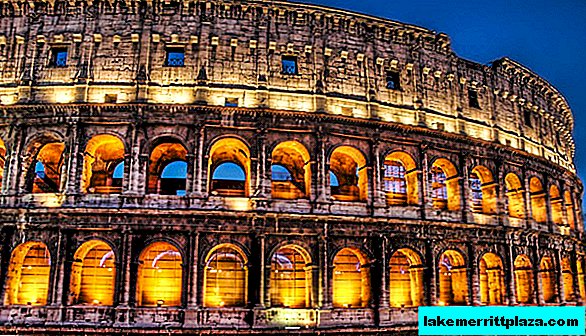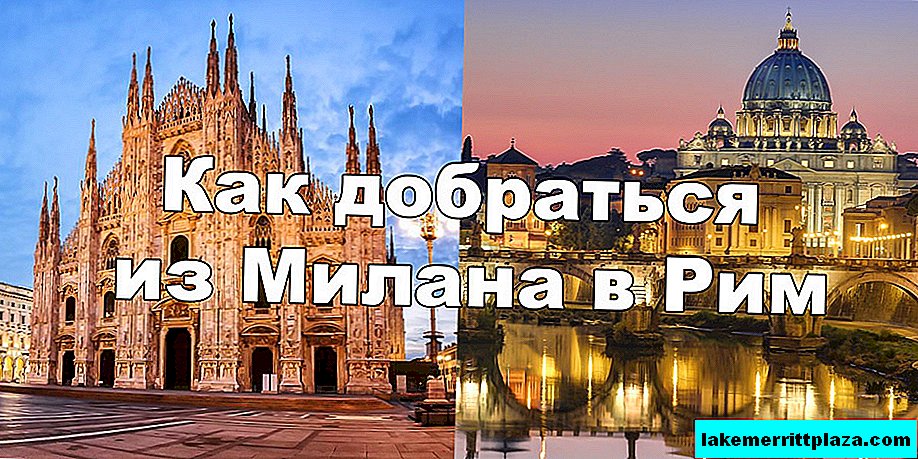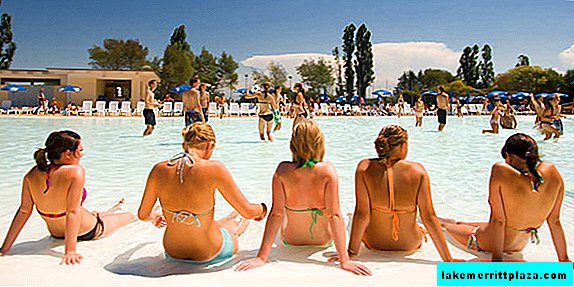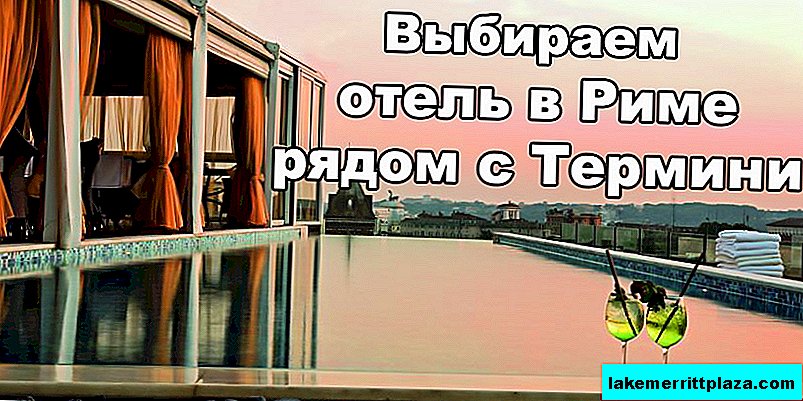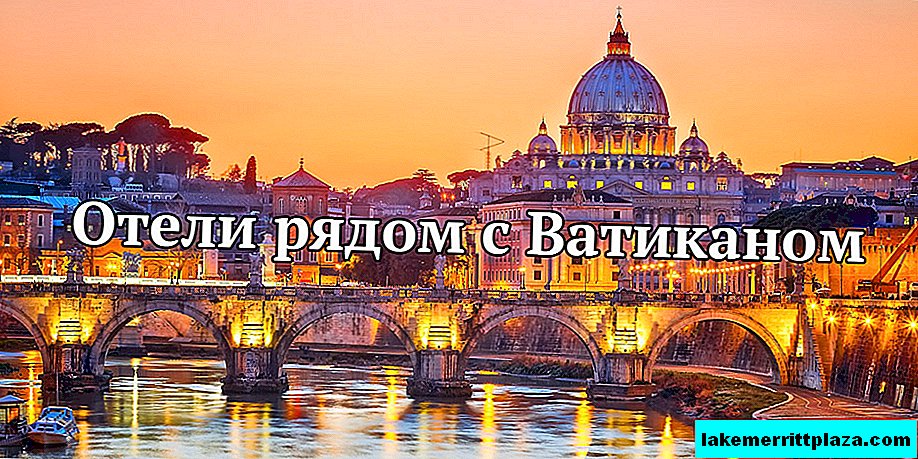Capitoline Hill is a historic and significant place. Two famous stairs, Capitoline Square with palaces, a fountain and monuments, the revered basilica of Santa Maria in Aracheli - all this is here. And, of course, great views of the Forum and the surrounding area.
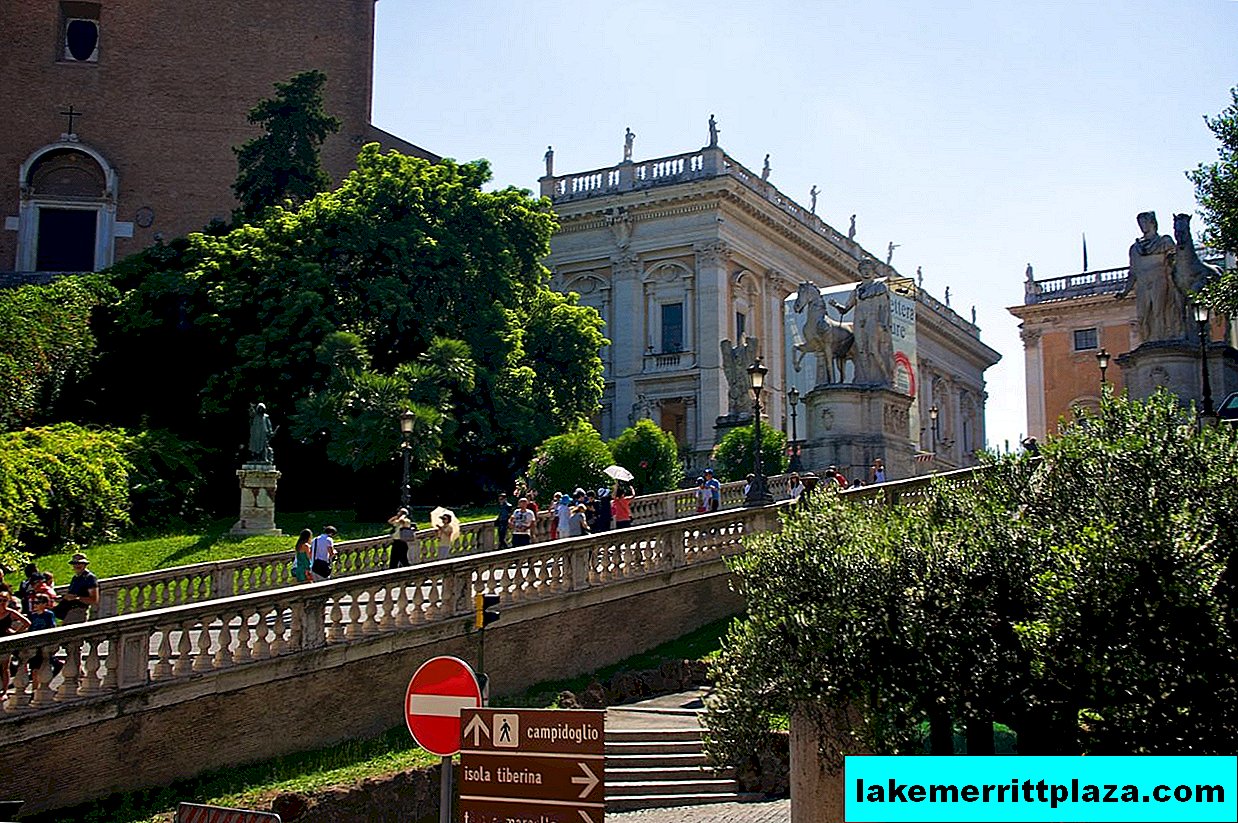
Capitol Hill (Monte Capitolino)
The eternal city of Rome spreads over seven hills. And one of them - the Capitol (Monte Capitolino), gathered a whole range of attractions: beautiful palaces, churches, original sculptures and impressive ancient ruins. Despite the importance, the hill is the lowest, and the area is small. However, people go to its peak in a continuous stream.
A bit of history
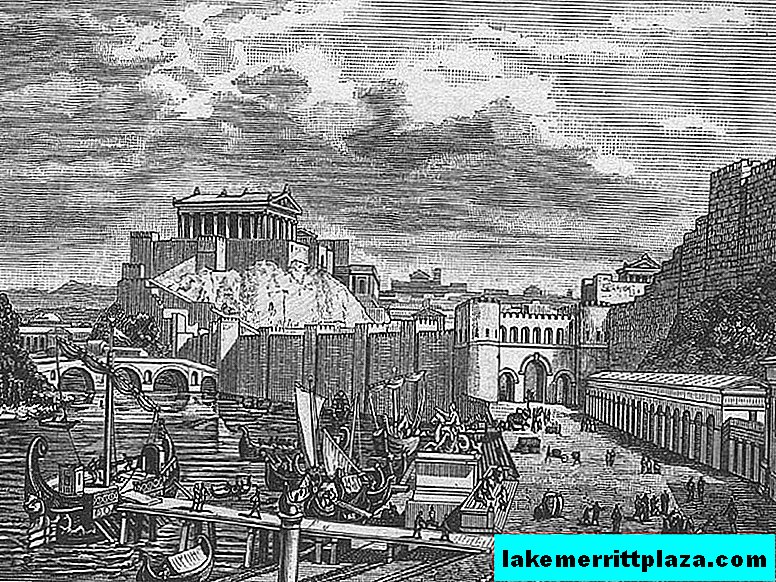
Capitoline Hill in the Roman Republic
In ancient times (IV century BC), the Capitoline Temple stood here, in honor of the three main ancient Roman gods: Jupiter, Juno and Minerva. He was also called simply - the Capitol. The Senate sat in it and held public meetings. The fall of the Roman Empire led to the ruin and decline of the Capitoline Temple. Many buildings on the hill were looted or burned, while others were rebuilt. In the V century, even goats were grazed here.
Thanks to the visit of the Spanish King Charles V, Capitoline Hill was rebuilt in 1536 by order of Pope Paul III. Michelangelo Buonarroti was commissioned to develop a new project. Until the end, the master did not have time to implement his plan. The case was continued by his students. In 1654, the square acquired its final form, which has survived to this day.
Attractions Capitol Hill
Stairs
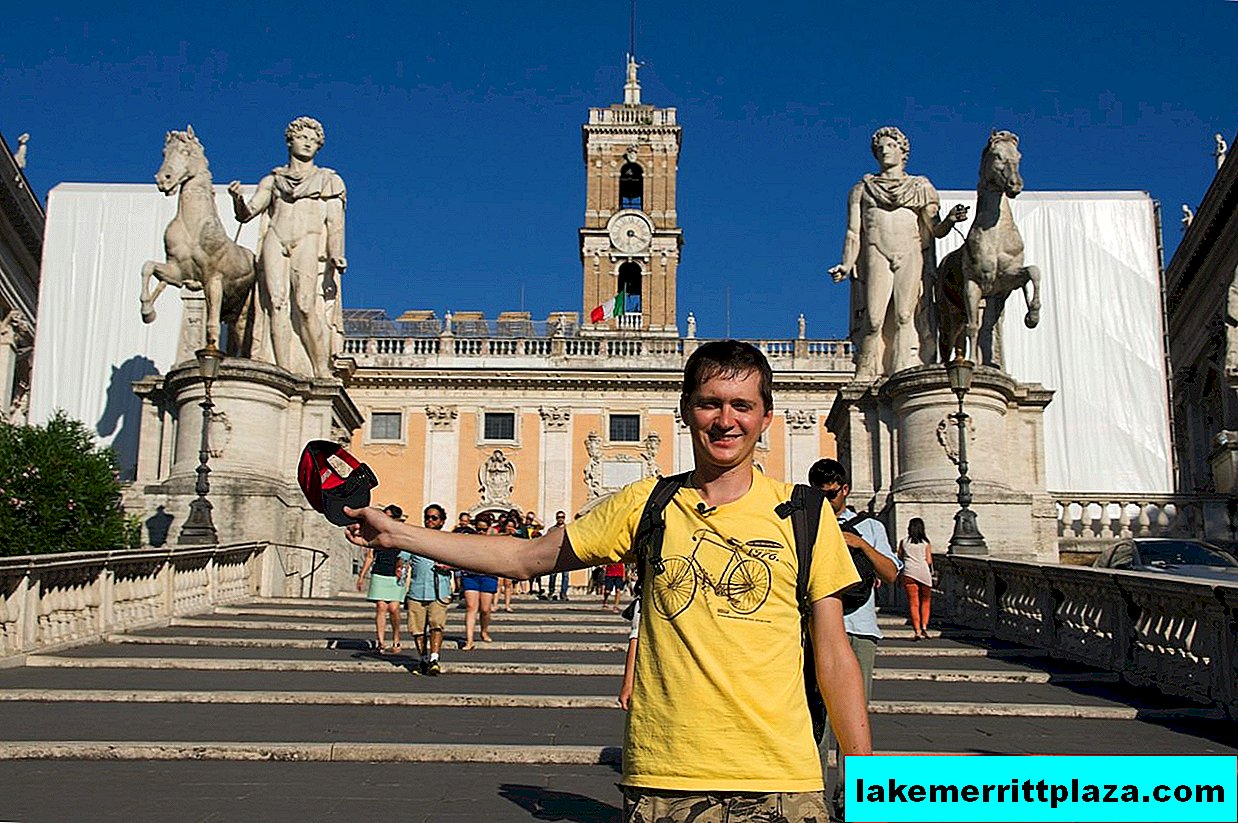
Capitol Square and Cordonate Staircase
Today you can climb the hill through 3 stairs. Wide Cordonata is located in the center and leads to Capitoline Square. Egyptian marble lions “guard” it from below, and above it are the 2nd large statues of the sons of Zeus, Pollux and Castor. In the middle of the route, on the side of the balustrade, is a bronze figure on a brick pedestal in a raincoat with a hood covering his face and a staff. This is a statue of the tribune of Cola di Rienzo. Along the balustrade there are statues of Emperor Constantine and his son, sculptures from the fountain "Mario Trophies" and milestones from the Appian Way.
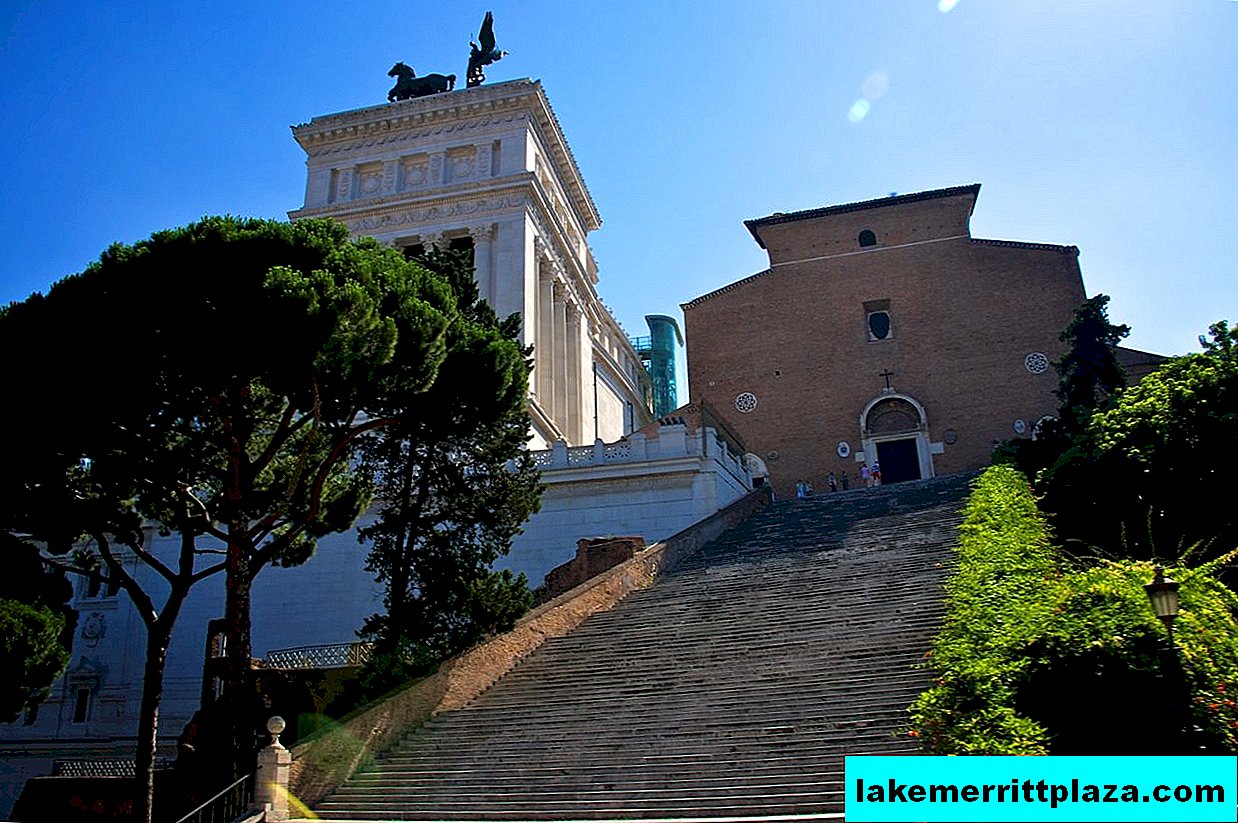
Staircase Lorenzo Simone di Andreozzo
The steep staircase to the left (when viewed from below) of the central of 124 steps was designed by Lorenzo Simone di Andreozzo in the XIV century. It leads to the temple of Santa Maria in Aracheli. An amazing belief is connected with this route - it is believed that if you walk it completely on your knees and rise in this way to the church itself - you will certainly win the lottery.
And if you move a little to the right of Cordonata, you will see an inconspicuous gentle staircase. It is used by locals.
Capitoline Square
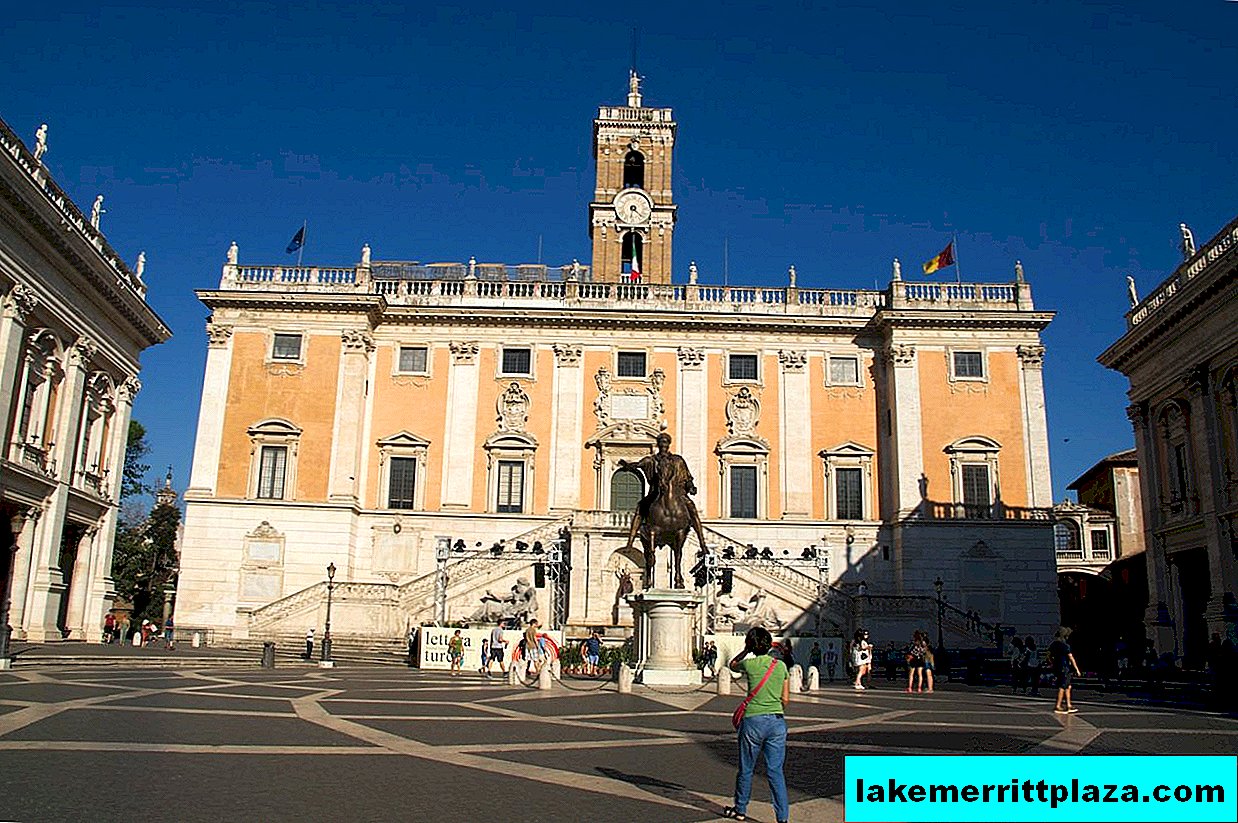
Capitoline Square
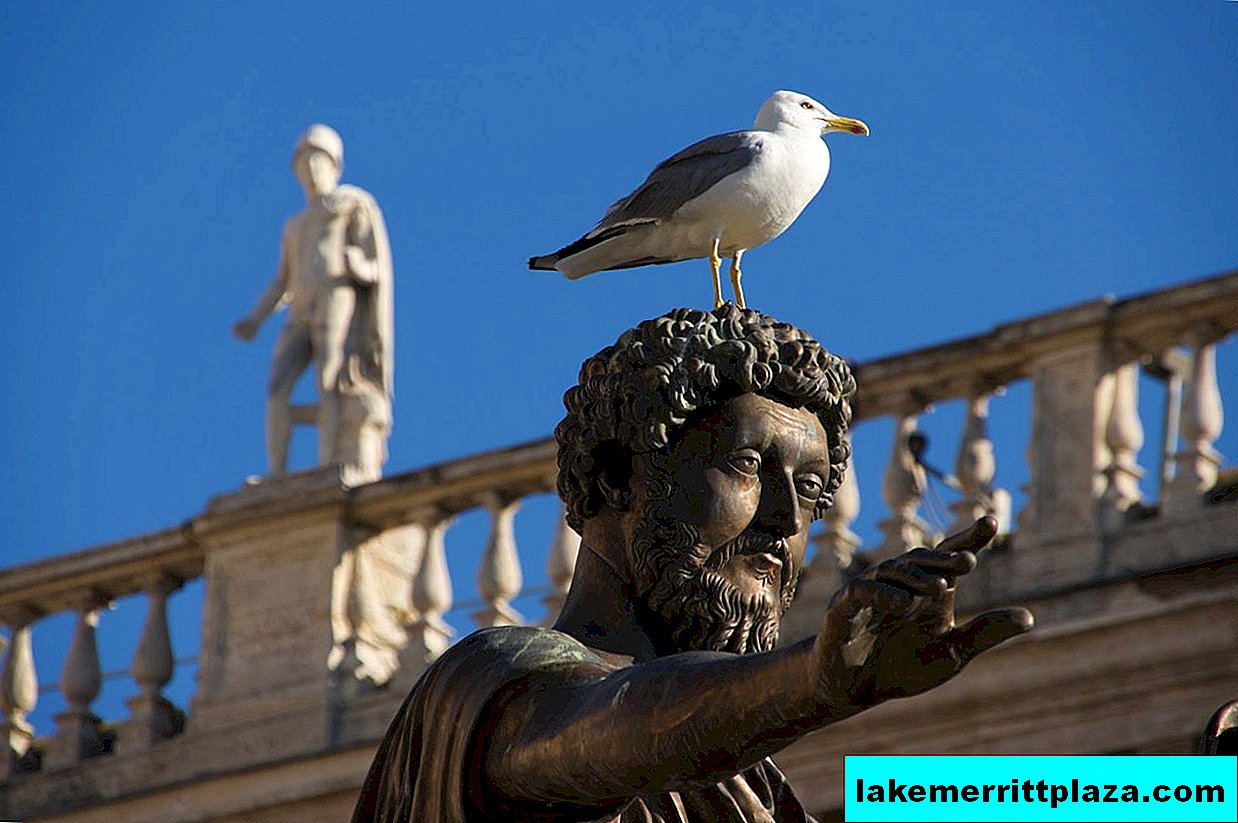
Head of Marcus Aurelius
Upstairs stretches Capitoline Square. In the center stands the powerful monument of Marcus Aurelius - the work of an unknown sculptor, which dates back to the 2nd century A.D. In the XVI century, on the instructions of the Pope, this equestrian statue was erected on the square, contrary to the will of Michelangelo, who did not provide for it in his architectural ensemble.
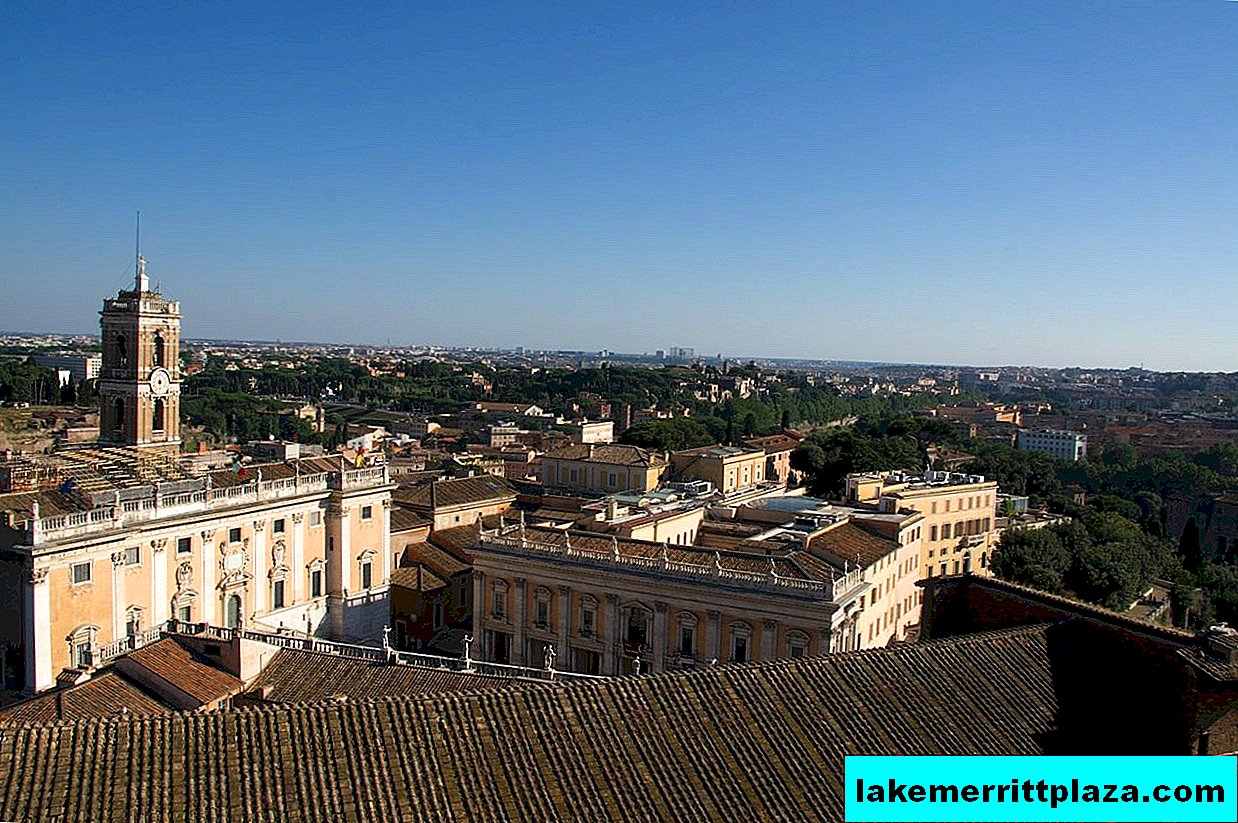
Palaces of Senators, Conservatives and Cafarelli
At the head of the square is the Senators Palace - a beautiful building with massive side towers, preserved from an older building; with a gable staircase. During the construction of the palace, part of the ancient Roman Tabularia was used. The palace is crowned by a tall bell tower decorated with a clock.
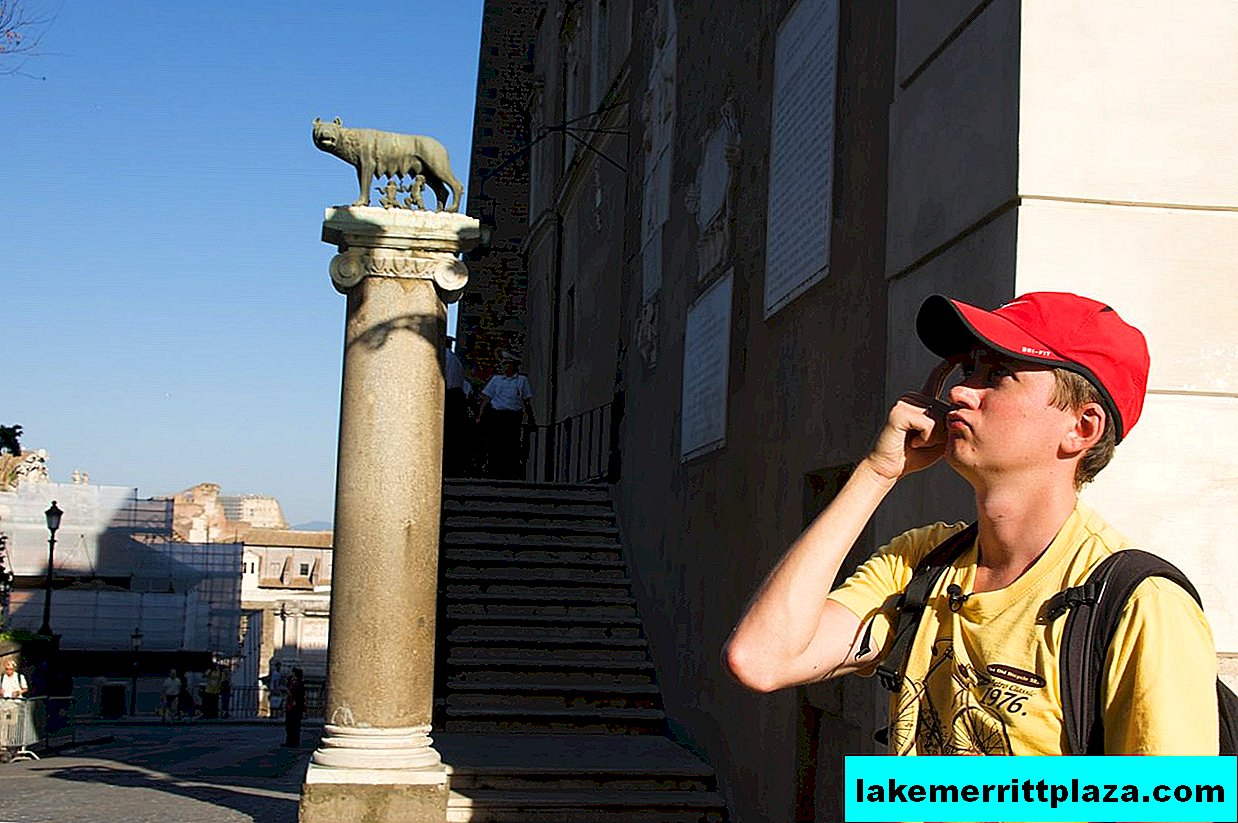
Capitoline she-wolf (copy)
Near the palace is the legendary Lupa Capitolina - Capitoline Wolf (copy of the sculpture, the original is placed in the Capitoline Museums). In the palace of the Senators is the City Hall of Rome.
On both sides of the square we see the same majestic facades. These are the palaces of the Conservatory and Nuovo, which house the Capitoline Museums.
Cafarelli Palace
Cafarelli Palace (Palazzo Caffarelli) (16th century) occupies the highest position on the Capitol. Today it belongs to the Capitoline Museums, and it houses an exhibition of coins, ancient murals and a collection of Santarelli. The palace was built on the site of the temple of Jupiter of Capitoline. Once, all the values of the world obtained by the Roman legionnaires were stored here. War trophies were a gift to Jupiter the Great. The commanders came here in a golden chariot. They laid golden wreaths at the cult statue of Jupiter. In the courtyard of the current building, in the pavilion behind the glass, brickwork is visible - this is all that remains of the great building. Below, on the site (tourists are unfortunately forbidden to enter there), fragments of columns, several sculptures and the remains of reliefs that once adorned the Capitoline Temple are visible.
Basilica of the Virgin Mary
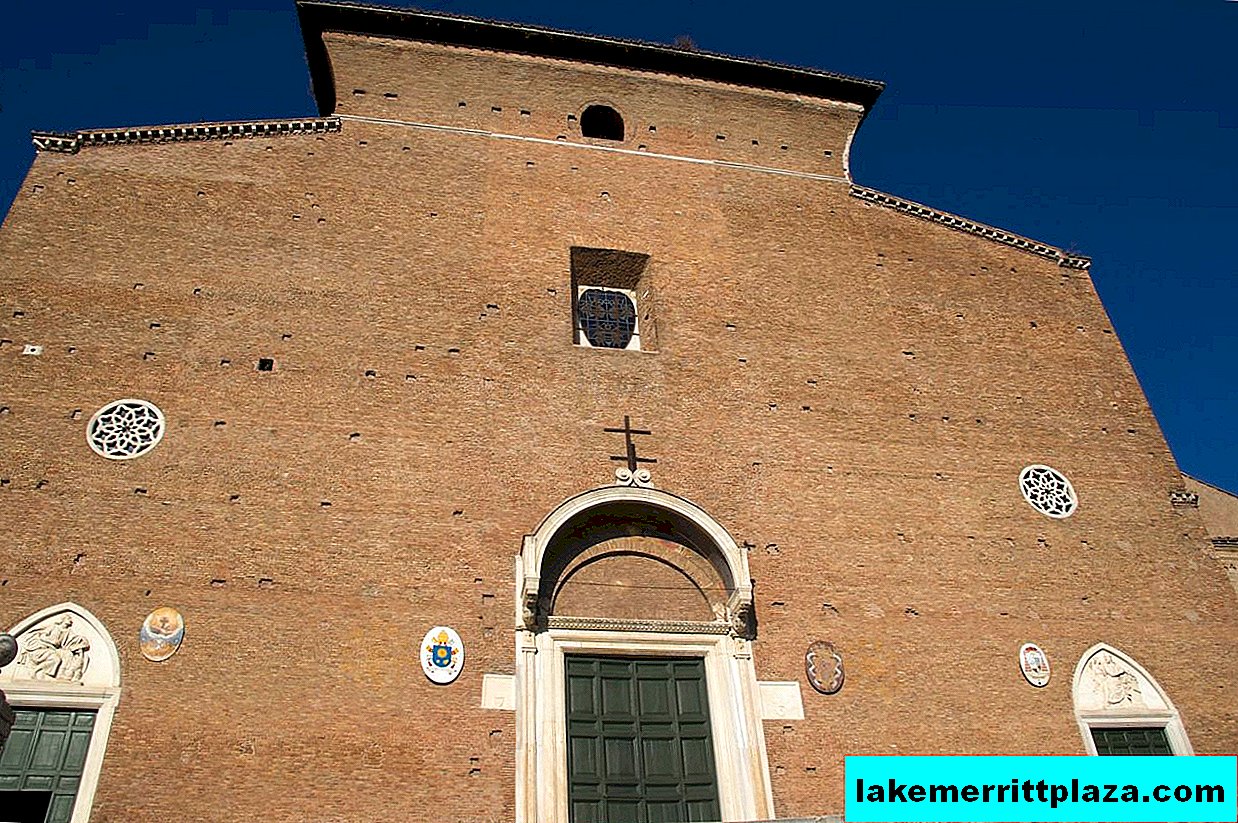
Basilica of Santa Maria in Aracheli (Basilica di Santa Maria in Aracoeli)
The Basilica of the Virgin Mary (Basilica di Santa Maria in Aracoeli - Santa Maria in Aracheli) was erected on the site of the ancient temple of Juno Coins. Roman money was called coins, named after the goddess, and was minted on the territory of the temple.
By the way, the legend of the geese who saved Rome is associated with the Temple of Juno. Geese were considered sacrificial animals in the temple. Once, sensing the "strangers" in the middle of the night, they gaggled awakened the guards. as a result, Rome was protected from attack by the Gauls.
Insula

Insula Aracheli, photo by Lalupa
On the Capitol from the ancient buildings remained Insula (II century AD) - an ancient Roman high-rise building, where apartments were rented out. Its ruins are located next to the stairs leading to the basilica, at the foot of the hill.
Mamertinsky prison
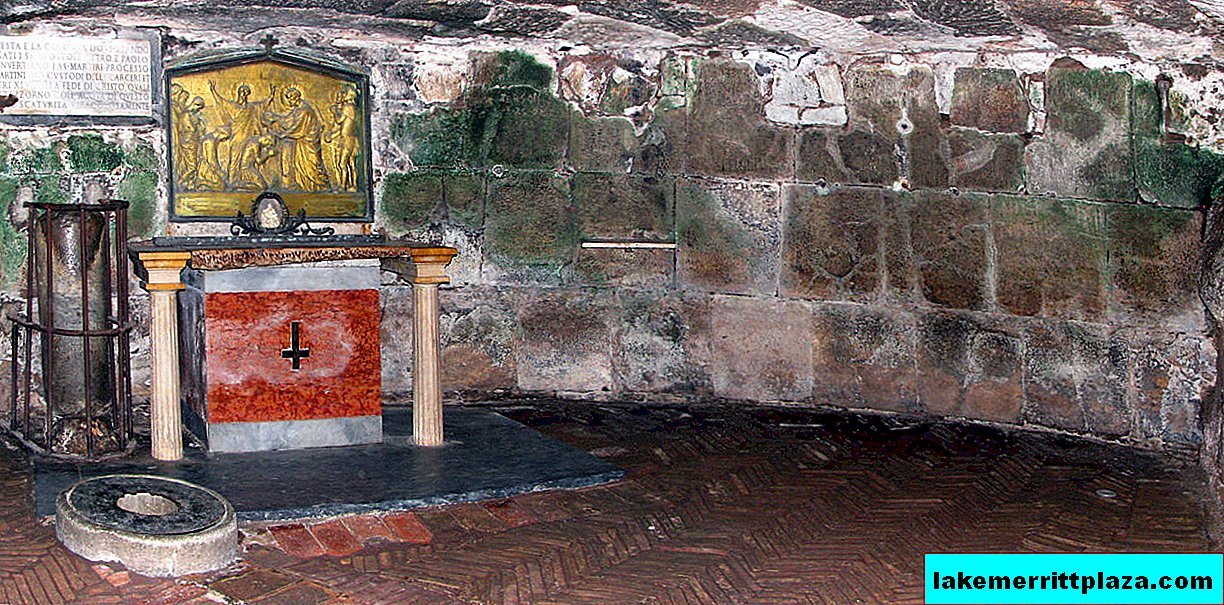
Prison room and altar in honor of the apostles, photo Chris 73
Mamertino prison (Carcere Mamertino) (VI-IV centuries BC) - a prison of ancient Rome, a 2-story underground structure in the northern part of the hill, where criminals were waiting for execution. According to legend, it was here that the apostle Paul and Peter spent their last days. A small altar with frescoes of saints was installed in the dungeon. In the IV century, the prison was closed, and pilgrims came here to worship the saints. And in the XVI century, a church of St. Joseph Carpenter. Today, the entrance to the dungeons of the former prison is free and free.
How to get there
You can walk to Capitol Hill on foot for 10-20 minutes from the Colosseum, the Roman Forum or Venice Square;
Take metro line B - station Colosseo;
by bus 30, 51, 81, 83, 85, 87, 118, 130F, 160, 170, 628, C3, No. 9 - to the stop Ara Coeli-Piazza Venezia;
by tram 8 to the Venezia stop.
How do I save on hotels?
Everything is very simple - look not only at the booking. I prefer the search engine RoomGuru. He is looking for discounts at the same time on Booking and on 70 other booking sites.

